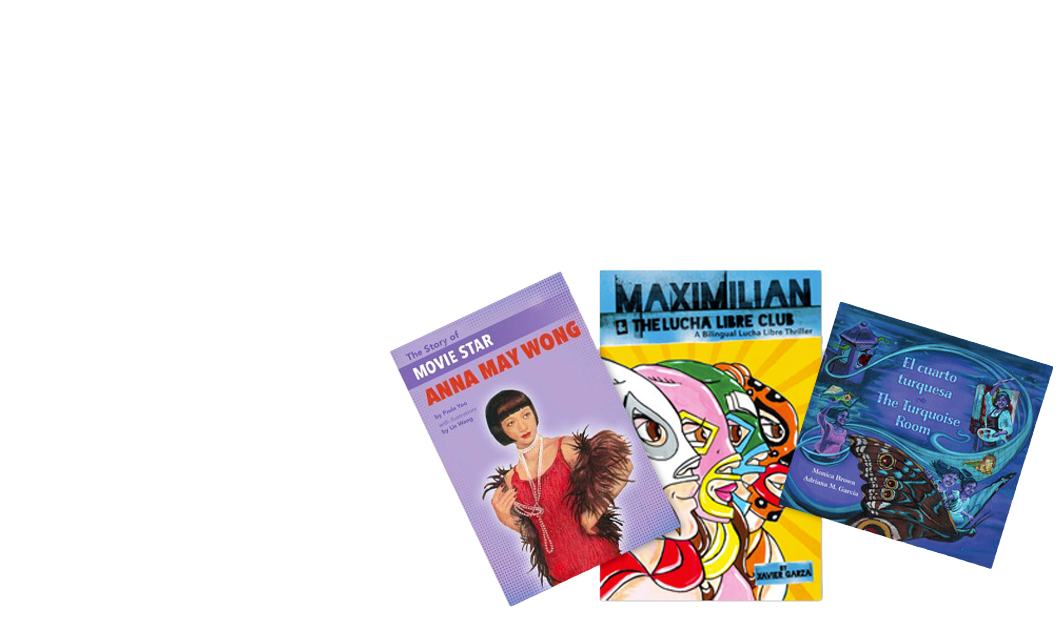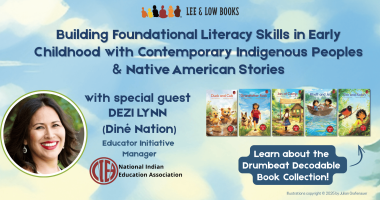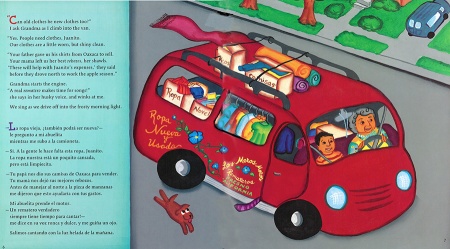 Resident Literacy Expert Jill Eisenberg began her career teaching English as a Foreign Language to second through sixth graders in Taiwan as a Fulbright Fellow. She went on to become a literacy teacher for third grade in San Jose, CA as a Teach for America corps member. She is certified in Project Glad instruction to promote English language acquisition and academic achievement. In her column she offers teaching and literacy tips for educators.
Resident Literacy Expert Jill Eisenberg began her career teaching English as a Foreign Language to second through sixth graders in Taiwan as a Fulbright Fellow. She went on to become a literacy teacher for third grade in San Jose, CA as a Teach for America corps member. She is certified in Project Glad instruction to promote English language acquisition and academic achievement. In her column she offers teaching and literacy tips for educators.
Note: This lesson can be done with other books, but dual language/bilingual books offer a unique opportunity to engage non-English speaking parents in the classroom and provide a way to continue rigorous discussions with their children at home regardless of English in the home. Bilingual books additionally underscore the diversity of our classroom communities and equalize parents as teachers in students’ minds.
Using a bilingual book with a Spanish-speaking parent in the classroom is a strategy I learned teaching in San Jose, CA as a part of a parent engagement program called “Los Dichos de la Casa” by Silicon Valley YMCA. Whether your classroom has only a few English Language Learners (ELLs) or a majority, bilingual and dual language books can encourage close reading of a text and increase accessibility of the text to ELLs.
In this series, I’ve modeled how bilingual and dual language books are being used in classrooms to foster deep, critical thinking and a love of reading. Last week I looked at first and second grade, and this week I take a look at third and fourth grade:
Exemplar text: Grandma and Me at the Flea/ Los Meros Meros Remateros by Juan Felipe Herrera
Guided Reading level: P
DRA level: 38
Recommended grades: 3-4
Objectives:
- Increase student achievement and confidence, especially among English Language Learners
- Provide meaningful ways for parents to contribute to the academic success of children
- Celebrate classroom and community diversity through the study of Latino culture and universal themes
Common Core Anchor Strands:
CCSS.ELA-Literacy.RL.3.2 Determine the central message, lesson, or moral and explain how it is conveyed through key details in the text.
CCSS.ELA-Literacy.RL.4.2 Determine a theme of a story, drama, or poem from details in the text.
CCSS.ELA-Literacy.SL.3.1 Engage effectively in a range of collaborative discussions (one-on-one, in groups, and teacher-led) with diverse partners on grade 3 topics and texts, building on others’ ideas and expressing their own clearly.
CCSS.ELA-Literacy.SL.4.1 Engage effectively in a range of collaborative discussions (one-on-one, in groups, and teacher-led) with diverse partners on grade 4 topics and texts, building on others’ ideas and expressing their own clearly.
Opening:
- Introduce title of the text and the parent-volunteer as a special guest teacher. Explain to students that today the book will be read alternating in both English and Spanish.
- Build background schema on topic of book: flea markets. In doing so, students will become more invested in the topic and allow students of all levels to appear as “experts” to their peers. This can be done with a KWL chart whole class or individually—what students think they know about the topic, what they want to know, and what they have learned. To elicit discussion, start with these questions:
- What do you know about a flea market or a farmers’ market?
- What do people do there?
- What kind of things can you buy there?
- What foods are at flea markets?
- Why do people go to flea markets?
- What is a community? How do flea markets and farmers’ markets bring people together?
- When asking these questions, have the parent-volunteer ask them first in Spanish and call on students to answer the questions in Spanish. Even if not all of the students speak or understand Spanish, one student at the end of that question’s discussion can summarize what was said and translate it into English for the rest of the class.
During Reading:
- As you begin reading, pause on each page so the parent-volunteer can read the Spanish portion. Each of you should have your own book.
- Have pre-determined stopping points to model or practice objective. Provide questions to the parent beforehand to translate into Spanish. Have the parent-volunteer read the question and elicit responses first in Spanish. Again, even if not all of the students speak or understand Spanish, one student at the end of that question’s discussion can summarize what was said and translate it into English for the rest of the class. Follow up by asking the same question in English and garnering answers in English.
Possible questions to ask:
- Why does the young man at the zarape booth give a blanket to Juanito to give to his grandmother?
- How does Grandma help Senor Raya?
- How does Grandma help Senora Vela?
- How does Grandma help the belt-man?
- Why does Grandma help all these people even though they are not in her family?
- Why are vendors giving Juanito so many things to give to his grandmother?
- Why does the jewelry-man want to help Juanito’s grandmother?
- What makes Juanito’s grandmother’s name so special?
- Why do you think the author gave the grandmother and the flea market the same name?
- How does each of the characters’ actions create a community? What would happen if these characters did not look after one another? What would happen to the community?
- What makes this community so special?
- What does the author want to teach us about community? What does the author want to teach us about responsibility?
- How is our school community similar to the flea market community in the book?
After Reading:
- Final discussion questions should be in both Spanish and English. Have the parent-volunteer read the question and elicit responses first in Spanish. Then, one student at the end of that question’s discussion can summarize what was said and translate it into English for the rest of the class. Follow up by asking the same question in English and garnering answers in English.
- I strongly recommend a parent-led art/craft activity that is relevant to the book topic. (See classroom guide link below for ideas)
- Reflect with class on why you read the text in English and Spanish.
- Review what themes they learned today and can continue to use at home.
For more lesson planning help, check out the classroom guide (PDF).
Further Reading:
Using Dual Language/Bilingual Books and Parent Volunteers to Foster Deep Thinking











